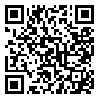Volume 13, Issue 1 (1-2014)
ijdld 2014, 13(1): 29-37 |
Back to browse issues page
Download citation:
BibTeX | RIS | EndNote | Medlars | ProCite | Reference Manager | RefWorks
Send citation to:



BibTeX | RIS | EndNote | Medlars | ProCite | Reference Manager | RefWorks
Send citation to:
Alizadeh M, Rahimi A, Arshinji M, Sharifi F, Arzaghi M, Fakhrzadeh H. Physical health status and socio-economic outcomes on elderly in Tehran metropolitan area. ijdld 2014; 13 (1) :29-37
URL: http://ijdld.tums.ac.ir/article-1-5089-en.html
URL: http://ijdld.tums.ac.ir/article-1-5089-en.html
Mahtab Alizadeh * 
 1, Azam Rahimi
1, Azam Rahimi 
 , Masome Arshinji
, Masome Arshinji 
 , Farshad Sharifi
, Farshad Sharifi 
 , Masoud Arzaghi
, Masoud Arzaghi 
 , Hossein Fakhrzadeh
, Hossein Fakhrzadeh 


 1, Azam Rahimi
1, Azam Rahimi 
 , Masome Arshinji
, Masome Arshinji 
 , Farshad Sharifi
, Farshad Sharifi 
 , Masoud Arzaghi
, Masoud Arzaghi 
 , Hossein Fakhrzadeh
, Hossein Fakhrzadeh 

Abstract: (10671 Views)
Objective: The present study describes assessing physical health status of old people in different age
groups in Tehran metropolitan area. The outcomes of this study could help to health policy makers to
develop of better health policy in gerontology field by determine of priorities of care in different age
groups of old people and effect of socio-economic components on elder’s’ physical health.
Method: This was a cross sectional study in 2010. The participants were (N=402) aged 60 years old and
over which have underrepresented from Shahid Beheshti university. The survey methods were via face-
to-face interviews, and just in a few cases as telephone interviews. The instrument to data collection
included demographic questionnaire, SF-36 short form and ADL tools. Data analyzed by Stata and SPSS
Ver.15 through t-test, one-way ANOVA. Regression models applied as well.
Findings: Based on the results 45% of elderly were in (60-69) years old, 36.5% were in (70-79) years
old, and 18.5% were 80+ years old. The median age was 71.5±8.9 years. Regarding ADL, 18.2% of
elderly were dependent 22.3% were semi dependent, and 59.5% of participants were independent to do
activity of daily living. Regarding physical functioning, 29.6% of elderly had severe limitation 32.6%
had moderate limitation, and 37.8% had no limitation in their physical function. Components of age, sex,
marital status, education, job, income, insurance, housing, and living with whom had significant
association with physical health status in old people. Although based on regression model and
considering in effect of conflict variables, age and sex had more effect to predict of activity of daily
living in old people. Age, sex, to be alone, and financial problems were the most predictors on physical
function in aged people.
Conclusion: The important components that effect on physical health of elderly related to fragile elderly
from aspect of socio economic factors. Based on the results of this study aged elderly and old women
were more disable to do Activity of Daily Living (ADL). Regarding physical function age, sex, living
with whom, and financial dependency were significant components in relation with physical function. In
other words, older people, women, elderly who did not live with their spouse, and elderly who were
dependent in financial aspect to others had more difficulty in physical function.
Type of Study: Research |
Subject:
General
Received: 2013/08/7 | Accepted: 2013/08/26 | Published: 2013/11/26
Received: 2013/08/7 | Accepted: 2013/08/26 | Published: 2013/11/26
| Rights and permissions | |
 |
This work is licensed under a Creative Commons Attribution-NonCommercial 4.0 International License. |



